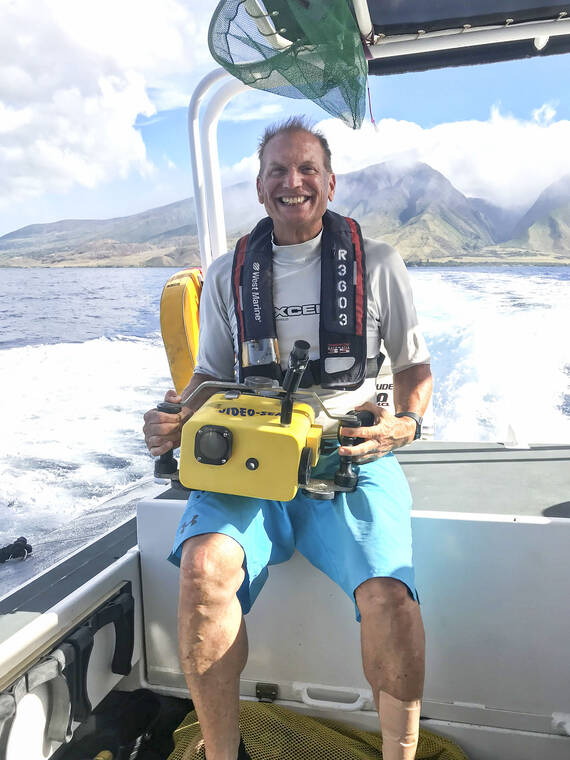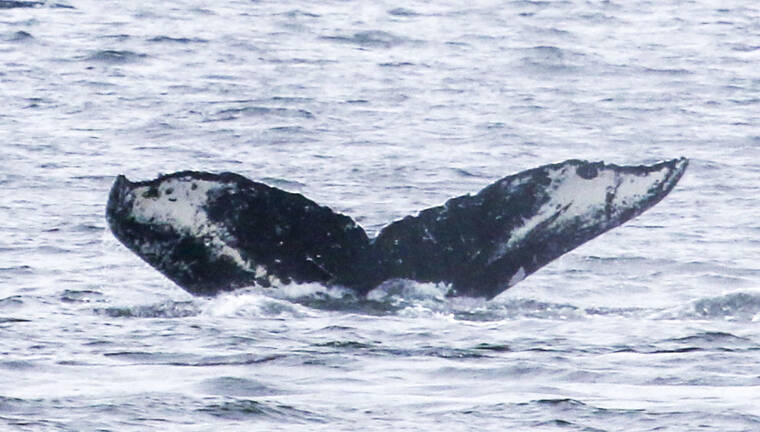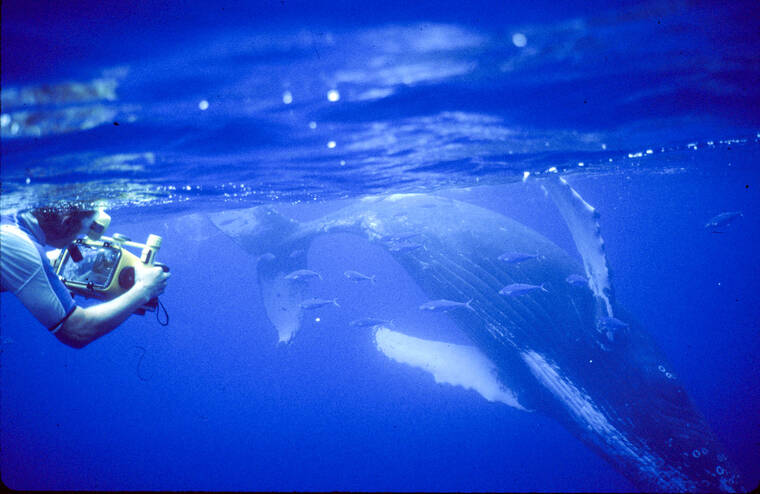UH-Hilo a major contributor to humpback whale study
HILO, Hawai‘i — In one of the largest collaborations among humpback whale researchers, over 60 co-authors published a paper on the changing population of North Pacific humpback whales.
The study used tens of thousands of images of whale tail flukes taken by institutes and individuals across the North Pacific to calculate the abundance of whales from 2002 through 2021.
The University of Hawai‘i at Hilo Marine Mammal Laboratory was one of the largest contributors to the study, providing thousands of images of tail flukes, which are the pigmentation patterns underneath a whale’s tail that serve as a “finger-print” for identifying individuals.
“We amassed over 10,000 tail fluke images and were one of the leading contributors of the study,” said UH-Hilo Professor Dr. Adam Pack. “We have a real legacy at UH-Hilo with over 30,000 images of humpback whales dating back to 1976. Luckily, we also have a lot of eager students who join me annually to work on the data.”
The Marine Mammal Lab was founded by Pack in 2008 and includes the catalog and database of humpback whale histories from the former Kewalo Basin Marine Mammal Laboratory of UH-Manoa and the Dolphin Institute, a nonprofit established in 1993.
Pack co-authored the final paper from the study, “Bellwethers of change: population modeling of North Pacific humpback whales from 2002 through 2021 reveals shift from recovery to climate response,” which was published in the scientific journal, Royal Society Open.
With the help of HappyWhale, an online automated humpback whale tail fluke-matching program, research groups were able to truly identify how many whales were living in the North Pacific between 2002 and 2021.
“HappyWhale uses automated algorithms to match photographs of tail flukes to each other,” Pack said. “Anybody can contribute photographs and you can find the history of a whale almost immediately.”
The results from the tail fluke photos showed that the population of humpback whales in the North Pacific increased to a peak estimate of 33,488, give or take 4,455 whales, in 2012.
However, a 20 percent decline in abundance through 2021 suggested that the population reached carrying capacity due to loss of prey resources.
“This paper looks at the broad picture of what is going on with the humpback whale abundance in locations across the North Pacific,” Pack said. “We were able to see the population peak at its carrying capacity from 2012 to 2013, as well as the negative consequences from the Pacific marine heat wave from 2014 to 2016.”
The 2014-16 northeast Pacific marine heat wave in the Gulf of Alaska depleted marine resources, such as zooplankton and krill, which humpback whales rely on for sustenance.
The lack of productivity at the base of the food chain resulted in poor reproductive and physical health for many humpbacks, which was especially reflected in the Hawaiian humpback whale breeding and calving area.
“What we experience in Hawai‘i in 2016 were less calves and less whales in general. In Alaska over the summer, they were completely absent in some areas,” Pack said. “We also saw that the smaller population of whales breeding in Mexico and Japan did not parallel that of Hawai‘i and were not as adversely affected.”
By 2021, the abundance of humpback whales in Hawai‘i had decreased by 34 percent from its peak in 2013.
“This study gave us the opportunity to look at the North Pacific heat wave and see how it affected a large scope of whales in a timely manner,” Pack said. “Researchers across the Pacific were able to trace what is going on with abundance over decades just by collaborating with each other.”
The paper includes research from not only scientists, but also boat captains, crew and participants on whale watch excursions who donated photographs to HappyWhale over the years.
“This is an unparalleled, collaborative effort, and I think it’s wonderful to see people work together for the common goal of protecting whales in their environment,” Pack said. “It shows how when we all pool our resources and talent together we can learn remarkable things about humpback whales and their marine environment.”
It is still peak season for the humpback whales in Hawai‘i waters, so Pack encourages mariners to be cognizant of how fast they’re traveling and to always remain at least 100 yards away from the whales, many of which are mothers and calves.
“It is incumbent on all of us, whether we on whale watching tours or private boats, to respect the space of whales,” Pack said. “For the population to continue to thrive, we have to make sure their physical and social environment is protected.
People interested in contributing to HappyWhale can do so at happywhale.com. The study is available online at doi.org/10.1098/rsos.231462.
•••
Reporter Kelsey Walling can be reached at kwalling@hawaiitribune-herald.com.




